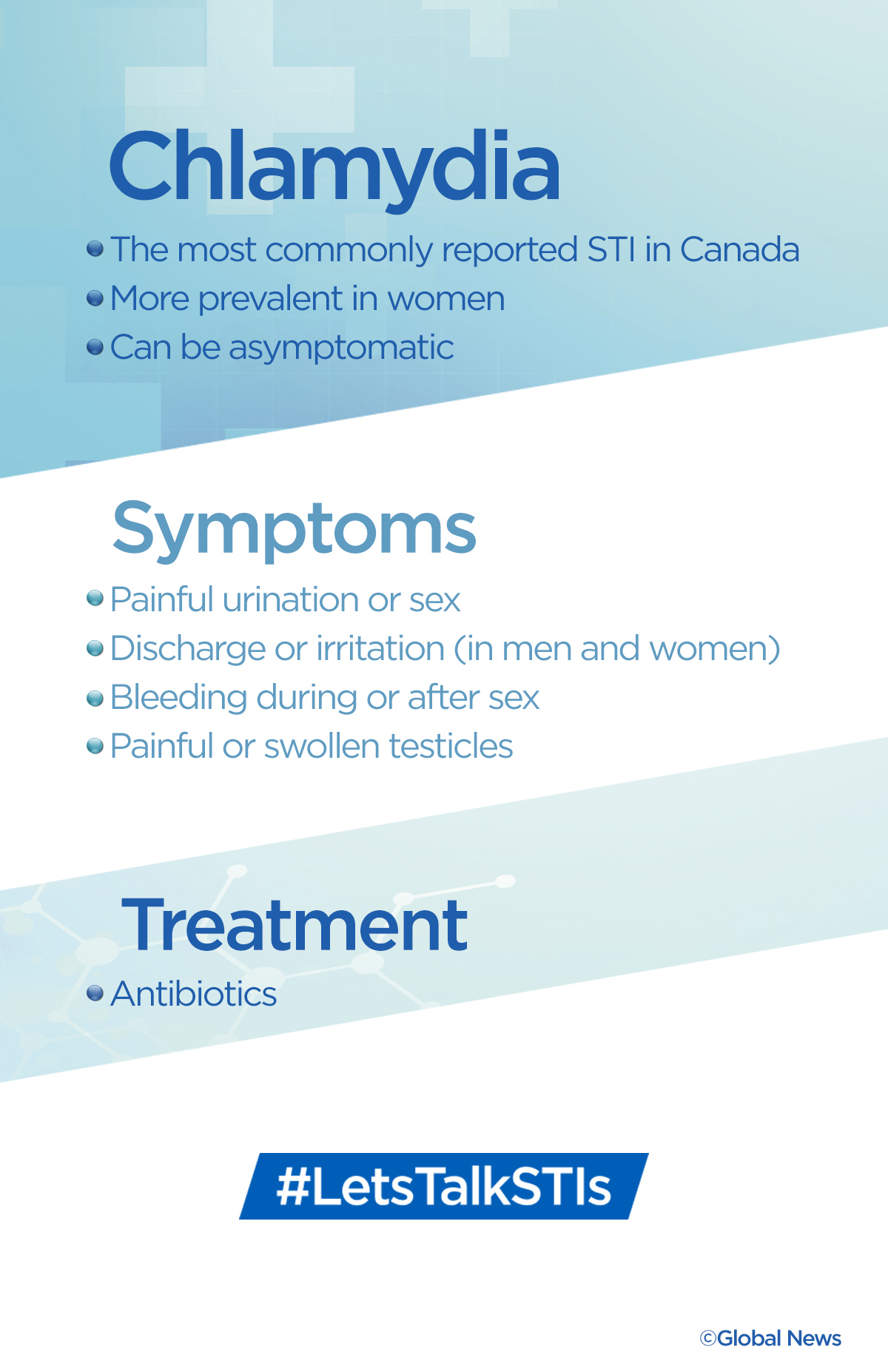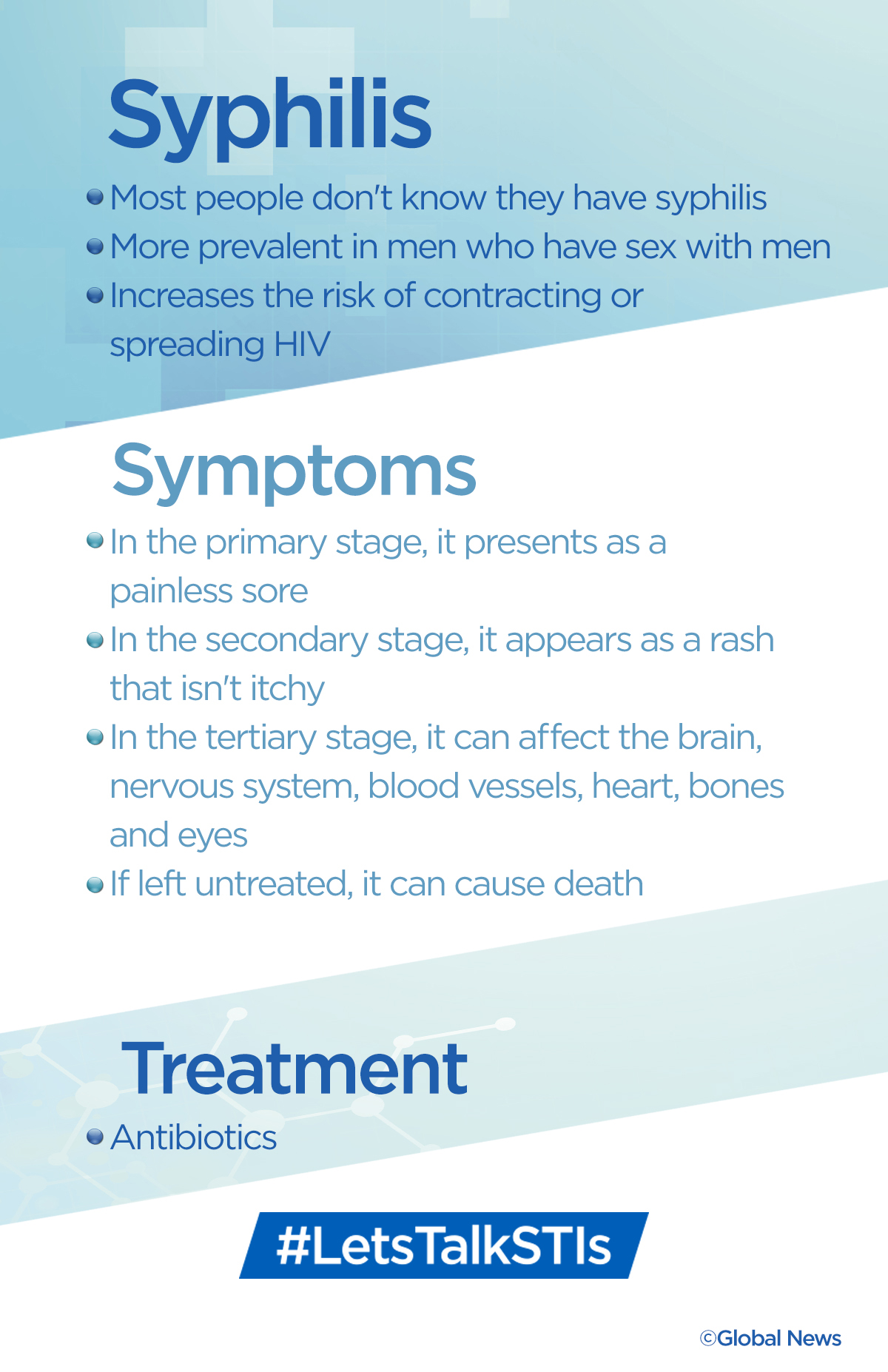If you remember the AIDS epidemic of the 1980s, you’ll surely remember the onslaught of safe sex campaigns that followed. From “no glove, no love” to Condoman, the message was clear: wear a condom. And yet, there has been a steady rise in sexually transmitted infections in Canada since the late 1990s.

Between 1998 and 2015 (the most recent national data available), chlamydia — the most commonly reported STI in Canada — has risen from 39,372 to 116,499 annual cases among all ages and genders, and gonorrhea infections increased from 5,076 to 19,845 in the same time period. Infectious syphilis rates rose dramatically from 501 to 4,551 cases, which is doubly shocking considering experts say it was nearly eradicated in North America 10 years ago.
What’s going on?
“There’s a combination of things happening,” says Dr. Michelle Naimer, clinical director of the Mount Sinai Academic Family Health Team and associate professor of medicine at the University of Toronto. “One factor is related to some changes to guidelines around pap smear testing, which has led to decreased screening for STIs.”
Until 2012, women and girls were told to have an annual pap smear starting three years after they became sexually active. Now, all women get tested every three years starting at the age of 21 (if they’re sexually active). But Naimer says this has led to chlamydia not being detected early enough and therefore, spreading faster, particularly in Ontario. Public Health Ontario data shows that reported chlamydia cases rose from 36,346 in 2011 to 41,623 in 2016.
“We’ve estimated that there were about 2,700 fewer cases detected per year for two years following the pap smear guideline change. If you’re screening less, you’re picking up fewer cases and it’s going to spread more.”
Although pap test guidelines change from province to province, the numbers in British Columbia and Quebec also indicate an uptick in STIs. In B.C., chlamydia cases rose from 12,352 in 2013 to 13,348 the following year; gonorrhea increased from 1,704 to 1,802 in the same time period. Only syphilis decreased slightly. In Quebec, chlamydia cases rose from 17,362 in 2010 to 24,335 in 2015, and STIs represent 75 per cent of reported infections in the province.
Naimer says the pap test guideline change in Ontario is not to blame, per se, but it is associated with increased rates of STIs, especially chlamydia.
READ MORE: Sexually transmitted infections: The Toronto neighbourhoods with the highest rates
In essence, the government was on the right track: the change in frequency of pap tests was due to what they learned about HPV and the success of the vaccine.
Of course, the responsibility of safe sex rests on those engaging in the act, and what health agencies know (or have extrapolated through surveys) about condom use in Canada isn’t good.
“Condoms are an important intervention, but you have to be consistent, and we’re finding that people generally are not,” says Dr. Johnmark Opondo, deputy medical health officer at Saskatoon Health Region. “They might use them once or twice and then they stop. Condoms offer the best protection, but you have to use them consistently and properly.”
Opondo says the last time the Saskatoon Health Region conducted a survey on condom use (following an outbreak of HIV and hepatitis C), they found the range of use was 30 to 35 per cent.
“The information we collect when we learn about a new STI case includes asking about condom use,” says Dr. Liane Macdonald, a public health physician at Public Health Ontario. “What we know is that reporting no condom use is frequent and it’s the top behavioural risk factor.”
However, she’s quick to point out that provincial data “doesn’t tell the whole story,” and understanding the practices and knowledge at the community level is crucial.
The 2013/2014 Canadian Community Health Survey showed that 57.5 per cent of sexually active Canadians aged 15 to 49 reported using a condom the last time they had sex, but that use decreased with age. While 70.8 per cent of 15- to 19-year-olds used condoms, that number dropped to 58 per cent for those 20 to 29.
“Our epidemiology shows that the mid-20s are when STIs are at their peak,” Opondo says. “And that’s dangerous because it’s when you’re entering your reproductive years.”
Who’s most at risk?
Although STI rates are on the rise for both genders, as well as heterosexual and non-heterosexual people, some groups are more at risk than others.
Macdonald says that the highest rates of chlamydia in Ontario are among women aged 15 to 24 — a particularly problematic fact for those in the higher end of the age range as they’re entering their reproductive years, and if gone untreated, chlamydia (and gonorrhea) can cause pelvic inflammatory disease and infertility.
Gonorrhea affects both sexes, although it’s more prevalent among men in their 20s and 30s, 40 per cent of whom are men who have sex with men (MSM), while the majority of cases of syphilis appear in MSM of all ages.
READ MORE: ‘Superbug gonorrhea’: What you should know about untreatable STIs
“These are the key groups where we need an emphasis on prevention and treatment, and screening,” Macdonald says.
What are the symptoms?
Unfortunately, STIs don’t always show symptoms — half of men and 70 per cent of women don’t show signs of chlamydia. But in those who do, they could experience: pain during urination, discharge, painful sex, bleeding during or after sex, itching of the vagina or around the urethra, and pain and swelling in the testicles.
Gonorrhea has many of the same symptoms, including abnormal bleeding between periods for women, and a coloured discharge for men.
Syphilis, however, is a bit trickier. It initially presents as a painless sore that could go away on its own without treatment. Unfortunately, it will then burrow into the body and spread through the blood and lymphatic system, presenting as a rash. This too can go away on its own.
“If you go to a sexual health centre with a sore, it will be treated, but if you go in at the rash stage, a physician could treat you for something else, but it’s still in your body,” Opondo says.
The tertiary stage could occur anywhere from 10 to 30 years later and could cause severe damage to the brain, nervous system, blood vessels, heart, bones and eyes. It could lead to death.
There’s more to screening than a pap test
While the former annual pap test would take a swab to screen for cervical cancer and a separate one to check for chlamydia and gonorrhea, Naimer says that there are better and less invasive ways of testing for STIs now that don’t require a pap. (In men, doctors take a swab from the urethra, the throat or rectum.)
Syphilis requires a blood test, and it would seem that there’s no time like the present to introduce regular testing among high-risk groups.
READ MORE: Dating with an STI: 7 ways to navigate the (often harsh) dating world
“Ten years ago, syphilis was virtually eliminated in North America, but there’s been an outbreak in the last few years across Canada and especially in the bigger urban settings,” Opondo says. “It’s high-risk behaviour associated with multiple partners and it’s spreading through multiple sexual networks. It’s predominant among men who have sex with men, but some of those men also have sex with women, so it’s a concern for everyone.”
The good news is, these are all highly treatable infections. Both chlamydia and syphilis are treated with antibiotics, while gonorrhea (which in recent years has become antibiotic-resistant) requires an injection as well as a course of antibiotics.
“If you have symptoms, you have to get tested and treated early,” Opondo says. “But once you’re treated, you’re cured.”
Read more from our series Below the Belt: Canada’s STI Problem.









Comments